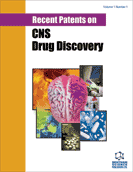Abstract
Migraine is a painful, sometimes debilitating disorder, which is frequently associated with various neurological symptoms. Its prevalence in the population is higher than that of any other neurological disorders, thus the burden of this disease on society is considerable. Although the introduction of triptans nearly two decades ago revolutionized the treatment of the disease there is still a huge unmet need regarding drugs with better properties. Formerly, migraine therapy primarily aimed at treating the pathological alterations of meningeal blood vessels that are thought to directly initiate a migraine headache attack. By now, it has been increasingly recognized by drug companies that abnormal neural function may be more important in the development of the disease and also in triggering an attack. Migraine is associated with an increased neuronal excitability and episodes of cortical spreading depression. Understanding the molecular mechanisms underlying the abnormal functioning of over-activated neuronal circuits may help to identify novel anti-migraine drug targets. Besides a general description of the pathophysiology and pharmacotherapy of migraine this review paper aims at discussing the possible drug targets through which migraine-related hyperexcitability and over-excitation can be attenuated. It will be shown how these new ideas appear in the recent patent literature.
Keywords: Drug discovery research, migraine headache, anti-migraine drug target, CGRP, voltage gated ion channels, glutamate receptors, neuronal hyperexcitability disorders, pharmacotherapy, side-effect
 12
12

